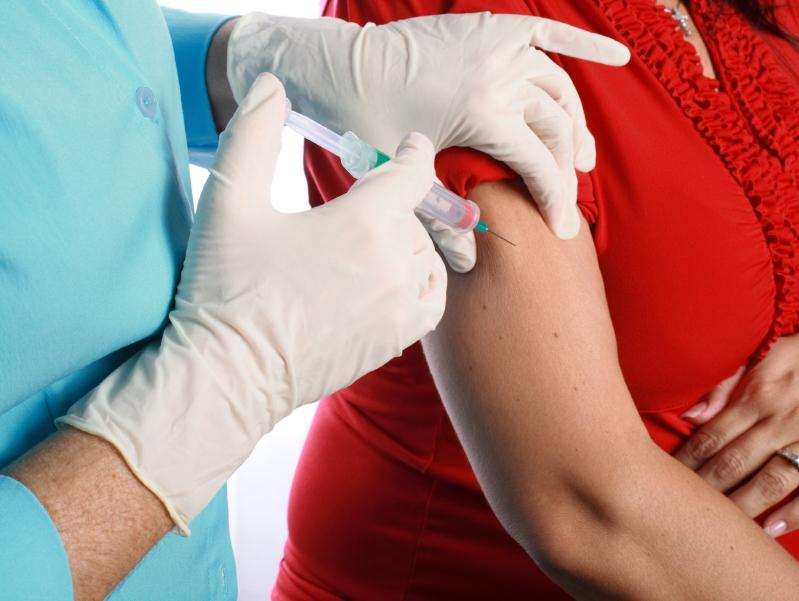The high-dose recombinant influenza vaccine offers more protection against flu than an egg-based standard-dose vaccine among adults aged 50 and 64 years, according to an observational cluster-randomized study published yesterday in the New England Journal of Medicine.
Researchers from Kaiser Permanente Northern California immunized more than 1.6 million patients aged 18 to 64 years with either the high-dose quadrivalent (four-strain) flu vaccine (Flublok; 632,962 patients) or one of two standard-dose vaccines (997,366) in the 2018-19 and 2019-20 respiratory virus seasons. They compared the effectiveness of the vaccines against infection and hospitalization.
Of the 955,076 patients aged 18 and 49 years, 37.0% received the recombinant vaccine, and 63.0% received a standard-dose vaccine. Of the 675,252 patients aged 50 to 64 years, 41.4% received the recombinant vaccine, and 58.6% were given a standard-dose vaccine.
"In traditional quadrivalent standard-dose inactivated influenza vaccines (SD-IIV4), chicken eggs are used to manufacture the influenza virus," the study authors wrote. "Mutations in the hemagglutinin protein during egg-based manufacturing can result in mismatch between the selected strain and the vaccine strain."
The quadrivalent (four-strain) influenza vaccine, made by study sponsor Sanofi, is manufactured without chicken eggs, resulting in a recombinant hemagglutinin protein that is genetically identical to that in the selected virus strain. "The vaccine also contains three times the amount of hemagglutinin protein as standard-dose vaccines, an increased level that has been correlated with increased protective hemagglutinin antibodies," the researchers wrote.
Could provide 'substantial public health benefit'
Of 16,340 flu tests performed, 23.4% were positive. Of the confirmed cases, 38.8% occurred in patients aged 50 to 64 years, and 61.2% were diagnosed in younger adults. Of all flu patients, 16.7% of those aged 50 to 64 were hospitalized, compared with 5.8% of those 18 to 49.
A total of 1,386 and 2,435 flu infections occurred in the recombinant and standard-dose groups, respectively. Among participants aged 50 to 64 years, 559 (2.0 cases per 1,000 people) were diagnosed as having flu in the recombinant group, compared with 925 (2.3 cases per 1,000) in the standard-dose group, for a relative vaccine effectiveness (VE) of 15.3% (95% confidence interval [CI], 5.9% to 23.8%).
Since standard-dose vaccines prevent at most 40 to 60% of influenza cases annually, reducing the incidence of breakthrough influenza by 15% would provide a substantial public health benefit, especially during more severe influenza seasons.
Relative VE against influenza A in those aged 50 to 64 years was 15.7% (95% CI, 6.0% to 24.5%). The recombinant vaccine didn't offer significantly more protection against flu-related hospitalization beyond the standard-dose vaccines.
The point estimate was 15.9% for hospitalization for confirmed flu and 16.7% for hospitalization for community-acquired pneumonia. A post hoc analysis of these outcomes combined yielded an estimated relative VE of 19.7% (95% CI, 2.8% to 33.7%).
"If standard-dose vaccines were already preventing most cases of influenza and breakthrough cases were uncommon, preventing 15% of breakthrough cases would be of modest public health benefit," the researchers wrote. "However, since standard-dose vaccines prevent at most 40 to 60% of influenza cases annually, reducing the incidence of breakthrough influenza by 15% would provide a substantial public health benefit, especially during more severe influenza seasons."



















